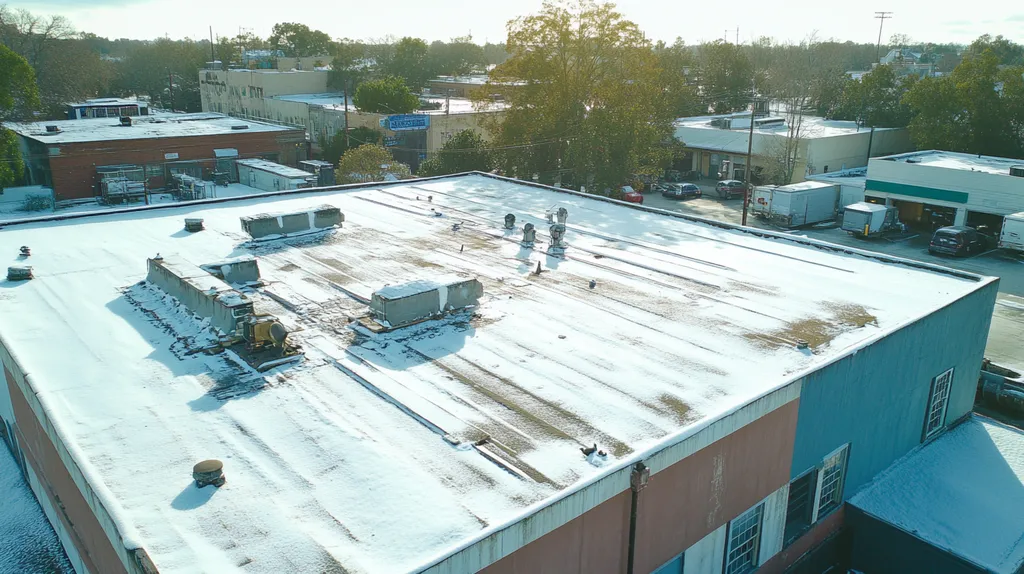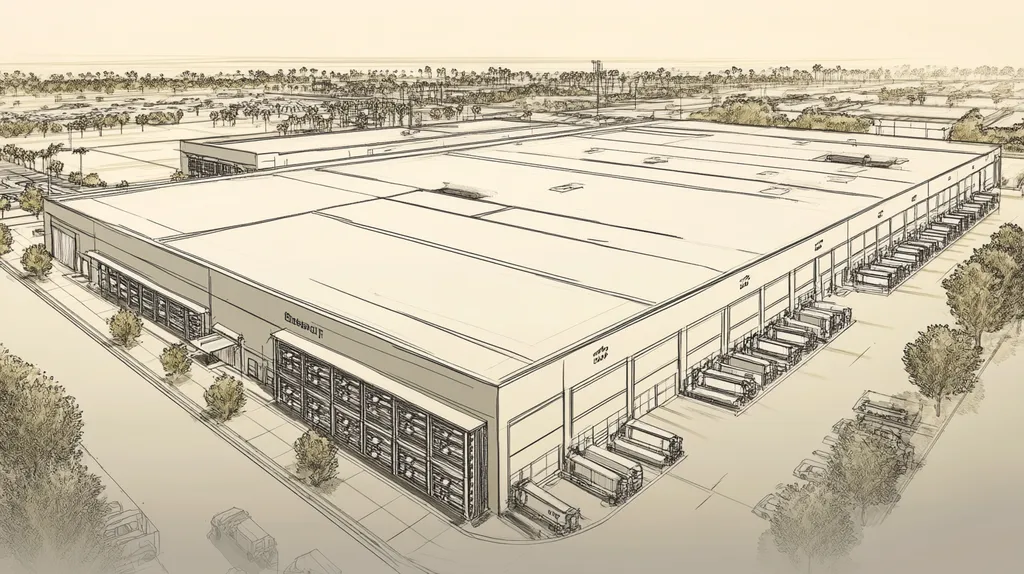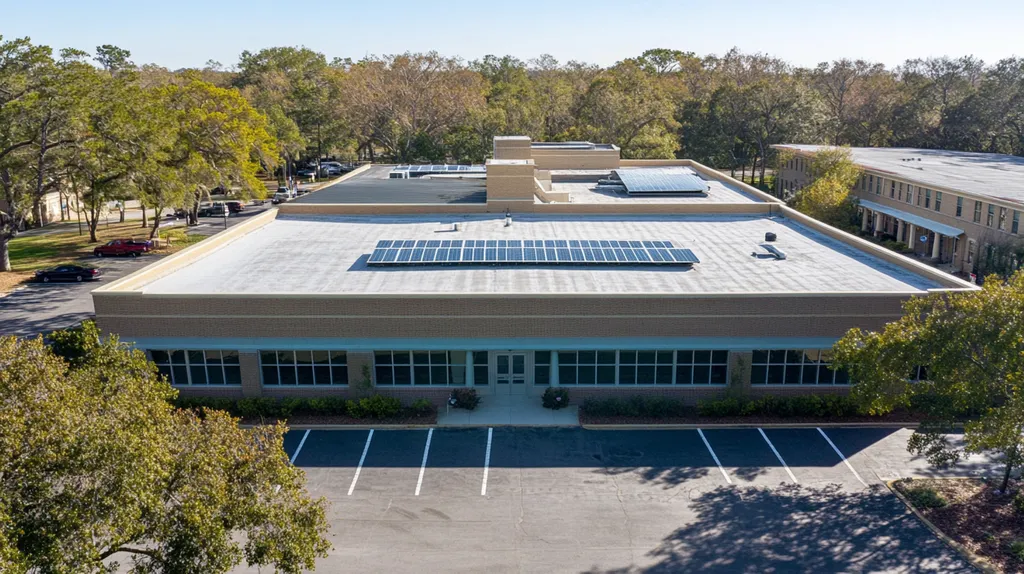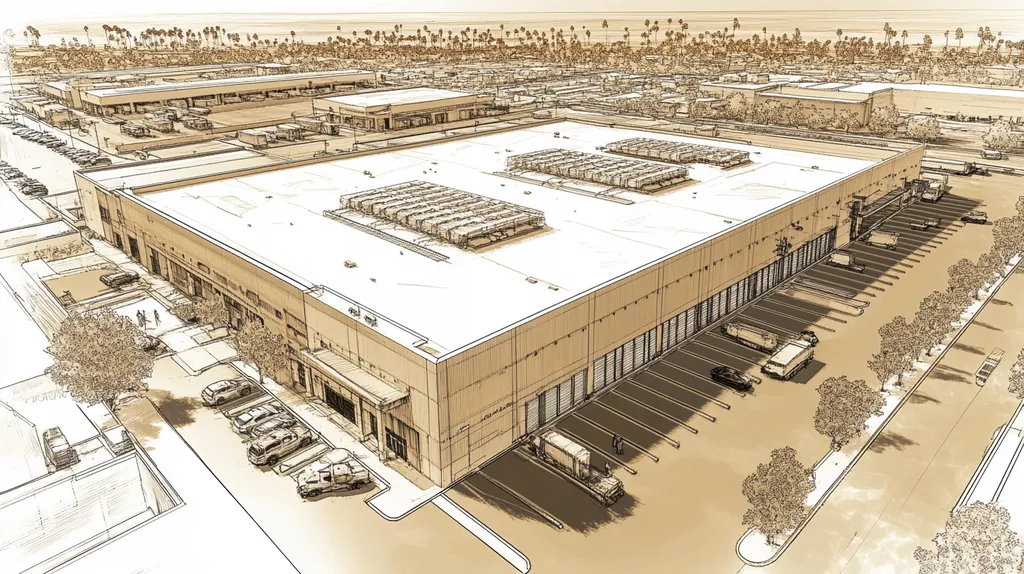In today’s industrial landscape, outdated roofing systems drain over $3.3 billion annually through energy waste and preventable damage. With technological advances transforming industrial roofing, facility managers face crucial decisions that impact both operational costs and building longevity.
From smart monitoring systems to innovative materials like thermally-responsive membranes, modern roofing technologies offer unprecedented opportunities for efficiency and sustainability.
This comprehensive guide breaks down the essential components of industrial roofing innovations, examining their practical applications, costs, and long-term benefits for facility operations.
SECTION 1: THE BASICS EXPLAINED
In a world where efficiency and sustainability are no longer optional, understanding roofing technologies for industrial facilities is crucial. Choosing the right roofing system can dramatically influence energy costs, enhance building durability, and boost overall productivity. In fact, research indicates that poor roofing can account for over 30% of a facility’s energy expenditures. This section will break down the essentials of roofing technologies, highlight their significance, and explain how they work.
What It Is (In Plain Language)
Roofing technologies refer to a range of materials and systems specifically designed for industrial buildings. These include traditional options like asphalt and metal roofs, as well as innovative solutions such as green roofs and cool roofing. Each type of roofing addresses unique challenges, including insulation, weather resistance, and energy efficiency.
Among these advancements, cool roofs are particularly noteworthy. They reflect sunlight and absorb less heat, keeping buildings cooler and resulting in lower cooling costs, especially in hot climates.
Another exciting development is photovoltaic roofing, which incorporates solar panels directly into the roof structure. This integration allows for the generation of clean energy while simplifying the building’s overall design.
By understanding these technologies, facility managers can make informed decisions that best suit their operational needs.
Why It Matters (To Your Building)
The choice of roofing system significantly impacts a building’s energy efficiency and operational expenses. An effective roof can cut heating and cooling demands, leading to energy savings of 20% or more. For industrial facilities, these savings can translate into substantial reductions in annual costs, positively affecting the bottom line.
Furthermore, advanced roofing technologies can influence maintenance schedules. Systems that withstand weather-related wear or reduce thermal fluctuations help prolong the life of roofing structures. A well-maintained cool roof, for instance, can last up to 20 years longer than traditional roofs.
Additionally, updating roofing technology can improve a facility’s sustainability. Implementing greener options not only satisfies regulatory requirements but also attracts eco-conscious partners and customers, setting the stage for future growth.
Thus, investing in the right roofing solution is vital for ensuring long-lasting resilience and efficiency in industrial settings.
How It Works
Comprehending the mechanics of different roofing technologies sheds light on their advantages. Traditional roofs typically rely on materials like asphalt, which forms a solid barrier against water but can trap heat. In contrast, cool roofs use reflective coatings to keep heat at bay, reducing the need for cooling.
Photovoltaic roofs take advantage of sunlight to generate electricity while also providing a protective layer. By converting solar energy into usable power, these roofs can lower utility bills and decrease dependence on fossil fuels, making them an appealing choice for environmentally conscious industries.
Meanwhile, green roofs, which incorporate plants and soil, use natural processes for insulation and rainwater management. This creates aesthetically pleasing environments that also promote better air quality and biodiversity.
Through all these innovations, the goal remains the same: enhance energy efficiency. By selecting appropriate roofing technologies, facility managers can achieve optimal performance and sustainability for their industrial buildings.
SECTION 2: PRACTICAL APPLICATIONS
In the fast-paced realm of industrial roofing, the selections made today can have significant consequences for energy efficiency and sustainability. The U.S. Department of Energy reveals that nearly 30% of a facility’s energy can evaporate due to inadequate roofing systems. It’s crucial for property owners and facility managers to master the latest roofing technologies to maximize performance while keeping operational costs in check. From energy-efficient materials to cutting-edge installation methods and smart monitoring systems, each aspect plays a vital role in crafting modern roofing solutions.
Common Uses & Examples
Industrial roofing technologies find applications across numerous sectors, bringing a wealth of benefits. For instance, single-ply membranes like TPO or EPDM are often selected due to their impressive durability and energy efficiency. These materials are lightweight and excellent at reflecting sunlight, which helps reduce cooling costs significantly.
Another effective solution includes cool roofing systems, designed to minimize heat absorption while stabilizing indoor temperatures. This type of roofing excels in warmer climates, with the potential to lower energy consumption by as much as 30%.
Integrated green roofing systems are also gaining traction, not only for their aesthetic appeal but for their ability to manage stormwater effectively. By introducing vegetation on rooftops, property owners enhance biodiversity and reduce runoff, providing both environmental and visual benefits.
Lastly, the adoption of roof monitoring technologies, such as IoT sensors, is rising. These advanced systems deliver real-time performance data, allowing facilities to proactively address maintenance needs and decrease downtime.
When You Need It Most
Strategically deciding when to adopt advanced roofing technologies is crucial for maintaining operational continuity. Facilities that are undergoing significant renovations or expansions should align roofing updates with these changes to avoid future disruptions. This approach helps to minimize costs and ensures that the roofing technology supports the facility’s new design and functions.
Facilities situated in areas prone to extreme weather events, such as hurricanes or heavy snowfall, must consider investing in robust roofing solutions to withstand such conditions. Utilizing reinforced materials can significantly extend a roof’s lifespan and prevent event-driven repairs.
When energy prices rise or when new regulations enforce stricter energy efficiency standards, property managers should prioritize upgrading their roofing. Technologies like cool roofs or reflective membranes can mitigate escalating operational expenses directly.
Routine inspections are also a crucial opportunity for roofing upgrades. When signs of wear or damage are detected, taking immediate action can improve performance and extend the roof’s overall lifespan.
Interactions With Other Systems
The effectiveness of industrial roofing technologies is often enhanced through their interactions with other building systems. For example, roofing materials that provide high thermal resistance can be integrated with advanced HVAC setups to optimize climate control and significantly trim down energy usage.
Additionally, modern roofing systems work hand-in-hand with building automation systems. With IoT-enabled sensors, they offer critical data on roof conditions, enabling seamless communication between maintenance teams and facility management.
Integrating drainage systems with roofing technologies is instrumental in enhancing stormwater management. Well-designed drainage prevents water buildup, which helps prolong roof life and sidestep leaks or structural damage.
Finally, the collaboration between roofing technologies and rooftop solar panels plays a pivotal role in energy generation. Such integration allows facilities to tap into renewable resources, cutting operating costs and championing sustainability.
SECTION 3: KEY TERMINOLOGY DECODED
Navigating the world of roofing technologies requires an understanding of its specific terminology. For commercial and industrial property owners, decisions about roofing systems can have a profound effect on energy efficiency, maintenance costs, and overall building performance. By familiarizing themselves with essential terms and industry jargon, stakeholders can make smarter choices that sustain their facility’s operational health and financial well-being.
Essential Terms Explained
Choosing the best roofing system involves knowing some key terms. One important concept is “thermal performance,” which describes how effectively a roof insulates against temperature fluctuations. Better thermal performance can significantly lower energy bills, particularly in regions with extreme weather.
Another crucial term is “drainage capacity.” This refers to a roof’s ability to effectively channel rainwater away, which is essential for preventing leaks and structural damage. A roof built with high drainage capacity helps keep facilities safe and dry.
“Reflectivity” is also vital; it measures how well a roofing surface bounces sunlight back into the atmosphere. High reflectivity can dramatically cut down cooling costs, making it a critical factor in energy-efficient building design.
Understanding these essential terms empowers property owners to assess roofing solutions that comply with regulations while boosting their building’s performance.
Industry Jargon Translated
Industry terms can sometimes be confusing. For example, “R-value” describes a material’s resistance to heat transfer. A higher R-value means better insulation, which is crucial for maintaining energy efficiency.
The term “membrane roofing” refers to single-ply systems made from synthetic materials. These roofs are favored for their durability and ease of installation, making them an excellent choice for many industrial facilities.
Translating industry jargon allows facility managers to make well-informed decisions that align with their building’s needs and sustainability goals.
Measurement & Units Simplified
Understanding measurement units in roofing is vital for effective planning. Square footage, abbreviated as “sq. ft.,” measures the total area of the roof. Knowing this figure aids in estimating material requirements and costs.
Another important metric is load capacity, expressed in pounds per square foot (psf). This measures how much weight a roof can support, a key consideration for facilities housing rooftop equipment.
Learning about slope terminology is also crucial. It’s often expressed as a ratio (e.g., 4:12), showing the height of the roof relative to its horizontal distance. This ratio affects both drainage and structural design.
Grasping these measurements and units prepares property managers to communicate their roofing needs effectively and make informed decisions on innovative technologies.
SECTION 4: DECISION FACTORS
In a competitive industrial landscape, the roofing choices facilities make can significantly influence both operational efficiency and financial health. The National Roofing Contractors Association reveals that poor roofing decisions contribute not only to energy waste but also to increased maintenance costs and shorter facility lifespans. Aligning the right roofing technologies with business objectives is essential for long-term success and stability.
Cost Considerations
Cost is a pivotal factor in roofing decisions for industrial settings. While the initial outlay for roofing materials and installation may seem substantial, the long-term expenses often reveal a different story. Facilities need to look beyond upfront costs and consider ongoing maintenance requirements and potential energy savings.
For example, thermally reflective roofing may have a higher initial price tag but can lead to significant energy reductions in the long run. Evaluating lifecycle costs can offer insights into the true financial implications of roofing investments.
Financing options play a critical role as well. Many manufacturers and contractors present leasing arrangements or financing plans, allowing facilities to distribute expenses over time and making advanced roofing technologies more attainable.
Ultimately, achieving a balance between quality materials and cost-effectiveness is vital for making informed and sustainable roofing decisions.
Performance Trade-offs
Performance trade-offs are crucial in determining the suitability of various roofing options. Different technologies provide distinct levels of insulation, waterproofing, and durability. A thorough understanding of these factors is necessary for meeting a facility’s specific operational requirements.
For instance, while a TPO (thermoplastic olefin) roof delivers excellent energy efficiency, it may not withstand extreme weather as effectively as a PVC (polyvinyl chloride) system. Facility managers often grapple with the need to balance high-performance solutions with budget limitations.
Researching specific roofing technologies can help address these trade-offs. Emerging materials frequently combine high performance with reduced maintenance demands, enhancing overall return on investment.
Careful evaluation of resilience against temperature fluctuations, fire resistance, and longevity will aid facility managers in making thoughtful decisions that align with their needs.
Lifespan & Durability Factors
Lifespan and durability are vital considerations in the effectiveness of any roofing system. Investing in quality roofing materials can significantly extend a roof’s lifespan, which minimizes the likelihood of costly repairs or replacements.
Industry guidelines suggest that a properly installed commercial roof can last anywhere from 15 to 50 years depending on the chosen materials. Metal roofs, for example, are renowned for their exceptional longevity and overall resilience, making them a favored option for various industrial applications.
Furthermore, being aware of local climate conditions is essential. Roofs exposed to harsh weather may necessitate additional durable features that could raise initial expenses but ultimately lower long-term operational costs.
Ultimately, facilities should prioritize roofing systems that align with immediate budget considerations while also ensuring robust performance and longevity, safeguarding their investments for years to come.
SECTION 5: COMMON CHALLENGES
Roofing systems in industrial facilities are not without their challenges, and ignoring these can lead to expensive repairs and disruptions to daily operations. For instance, untreated leaks can deteriorate structural integrity, cause water damage, and ultimately disrupt productivity. By recognizing these challenges early, property owners can save significant time and money. This section focuses on common issues, warning signs to monitor, and preventative actions essential for keeping roofing systems in top condition.
Frequent Problems & Solutions
One of the most pressing challenges industrial roofs face is water infiltration, often stemming from damaged seams or aging materials. When water seeps in, it can accelerate insulation degradation and lead to structural concerns. To combat this, facilities should schedule regular inspections and prompt repairs. Investing in high-quality sealants or membranes can also offer lasting protection against water intrusion.
Another frequent challenge is thermal expansion and contraction, which can affect many roofing materials. These natural movements might create gaps and loosen fasteners, jeopardizing the roof’s integrity. Employing flexible roofing materials specifically engineered to handle temperature variations can help alleviate this issue, ensuring a reliable seal.
Ponding water poses a significant concern, especially on flat roofs. Water accumulation can weigh down roofing materials and hasten deterioration. To tackle this, facility managers should design efficient drainage systems and conduct routine checks to verify that water does not accumulate.
In summary, addressing these common problems involves a proactive approach that combines regular maintenance, timely repairs, and investment in high-quality materials. Following these steps will help facility owners boost the lifespan and effectiveness of their roofing systems.
Warning Signs To Watch For
Identifying roofing issues early can drastically improve management efficiency. A major warning sign is spotting water stains on ceilings or walls, which often indicates leaks in the roofing system. Facility managers should investigate these signs immediately to locate and remedy the source of the water intrusion.
Another concerning indicator is the presence of blistering or bubbling on the roof’s surface. This condition typically points to trapped moisture, which can weaken roofing materials over time. Conducting timely inspections and implementing repairs can preserve the roof’s structure.
Furthermore, missing or damaged shingles or roofing membranes can create serious vulnerabilities. Regular inspections are vital for spotting these issues before they worsen, enabling strategic repairs that save resources in the long run.
By staying vigilant regarding these warning signs, facilities can prevent larger problems and enhance the overall durability of their roofing systems. A proactive monitoring approach fosters more effective maintenance strategies.
Preventative Approaches
Implementing preventative maintenance is essential for ensuring the longevity and functionality of industrial roofing systems. A structured inspection routine, ideally conducted bi-annually, can help identify minor issues before they escalate, allowing for early remediation.
Establishing a comprehensive roof management plan is crucial as well. This plan should include scheduling regular maintenance tasks such as debris removal and maintaining drainage systems to optimize roof performance. Keeping a detailed log of inspections and repairs aids in tracking the roof’s health over time.
Training facility staff to recognize basic roofing issues equips them to identify concerns early. Knowledgeable personnel can spot signs of wear, leading to quicker responses and collaboration with professional roofing contractors when needed.
Finally, leveraging technology can further bolster preventative measures. Advanced monitoring systems can provide real-time data on a roof’s condition, empowering facility managers to make informed decisions regarding maintenance and repairs, thus maximizing the roof’s performance.
SECTION 6: NEXT STEPS & RESOURCES
In the fast-paced world of industrial roofing, making informed choices is critical for safeguarding investments and enhancing operational efficiency. Property owners and facility managers need to actively engage with roofing providers to navigate the complexities of modern technologies. By asking the right questions and adhering to industry standards, they can greatly improve long-term performance and cost savings.
Questions To Ask Providers
When assessing roofing providers, property owners should prioritize understanding project timelines and the materials used. It’s essential to inquire about warranties on both labor and materials for long-term assurance. Additionally, asking about the provider’s experience with specific technologies is vital, as specialized expertise can significantly affect project outcomes.
Requesting clear project plans is crucial. These plans should outline installation steps and methods to address unexpected challenges. Transparency fosters trust and confidence in the provider’s ability to deliver. Moreover, discussions surrounding maintenance and repair services are important since ongoing care can enhance the roof’s lifespan.
Finally, asking for references or case studies from similar projects can provide insight into the provider’s reliability. Understanding their previous successes or challenges will help make more informed decisions.
Industry Standards & Guidelines
Grasping industry standards is essential for sound roofing decisions. Organizations like the American Society for Testing and Materials (ASTM) establish guidelines that ensure roofing materials and installation practices meet crucial safety and performance benchmarks. Adhering to these standards can prevent future liability and costly repairs.
Property owners should also familiarize themselves with local building codes related to roofing to ensure that all work complies with regulations. Non-compliance can lead to steep fines and project delays. Working with providers who are knowledgeable about these codes is crucial for smooth project execution.
Staying current with research and technological advancements is equally important. Various industry organizations publish reports that highlight best practices for roofing technologies, offering valuable insights for property owners aiming to make informed upgrades.
Further Learning Simplified
To expand their understanding of roofing technologies, property owners and facility managers should seek out workshops and webinars focused on industry trends. Numerous organizations offer free or low-cost educational resources that break down complex topics into digestible content.
Online resources, including industry journals and websites, can provide valuable information as well. Engaging with articles that present case studies of successful roofing projects encourages practical learning. Joining professional associations can also facilitate networking opportunities and access exclusive educational materials.
Lastly, subscribing to industry newsletters will keep property owners updated on the latest innovations and products available. This continuous learning approach not only helps in making better roofing choices but also empowers professionals to enhance the management of their facilities effectively.
Moving Forward
With industrial roofing technologies advancing rapidly, facility managers who fail to adapt risk falling behind, potentially losing millions in preventable energy waste and structural damage.
The stakes are clear: modern roofing solutions can reduce energy costs by up to 30% while extending roof lifespans by two decades or more.
From smart monitoring systems to thermally-responsive materials, today’s roofing innovations offer unprecedented opportunities for efficiency and sustainability.
Success requires staying informed about emerging technologies, maintaining rigorous maintenance schedules, and partnering with qualified providers who understand modern industrial roofing systems.
By embracing these advances while following industry best practices, facility managers can protect their investments and position their properties for long-term success in an increasingly competitive market.
FREQUENTLY ASKED QUESTIONS
Q. What are commercial roof technologies and why are they important?
A. Commercial roof technologies include various materials designed for durability and efficiency. Choosing the right system impacts energy costs and building lifespan. Understanding these options helps facility managers enhance operational performance and sustainability.
Q. How do industrial roof systems improve energy efficiency?
A. Industrial roof systems like cool roofs and green roofs help manage temperature effectively. They reflect sunlight or provide insulation, reducing heating and cooling demands. This lowers energy consumption and can lead to substantial cost savings over time.
Q. What does drainage capacity mean for commercial roofs?
A. Drainage capacity refers to how well a roof channels rainwater away. A roof with high drainage capacity prevents leaks and structural damage. Proper design and maintenance ensure roofs remain safe and effective during inclement weather.
Q. What should I consider when assessing the cost of a new industrial roof?
A. When assessing costs, consider both initial expenses and long-term savings. High-performance roofs may have a higher upfront cost but lead to significant energy reductions. Evaluating lifecycle costs helps identify the best options for your budget.
Q. What common problems can affect industrial roofing systems?
A. Common problems include water infiltration, thermal expansion, and ponding water. These issues can lead to serious damage if not addressed. Regular inspections and timely repairs minimize risks and extend the roofing system’s life.
Q. How can I choose a reliable commercial roofing provider?
A. When choosing a provider, ask about their experience and project plans. Ensure they adhere to industry standards and can handle your specific needs. Requesting references or case studies can also provide insights into their reliability.
Q. What materials are best for industrial roof systems?
A. The best materials often depend on specific facility needs, climate, and budget. Options like metal roofs are known for durability, while single-ply membranes offer energy efficiency. Researching each material’s performance helps in making informed decisions.










